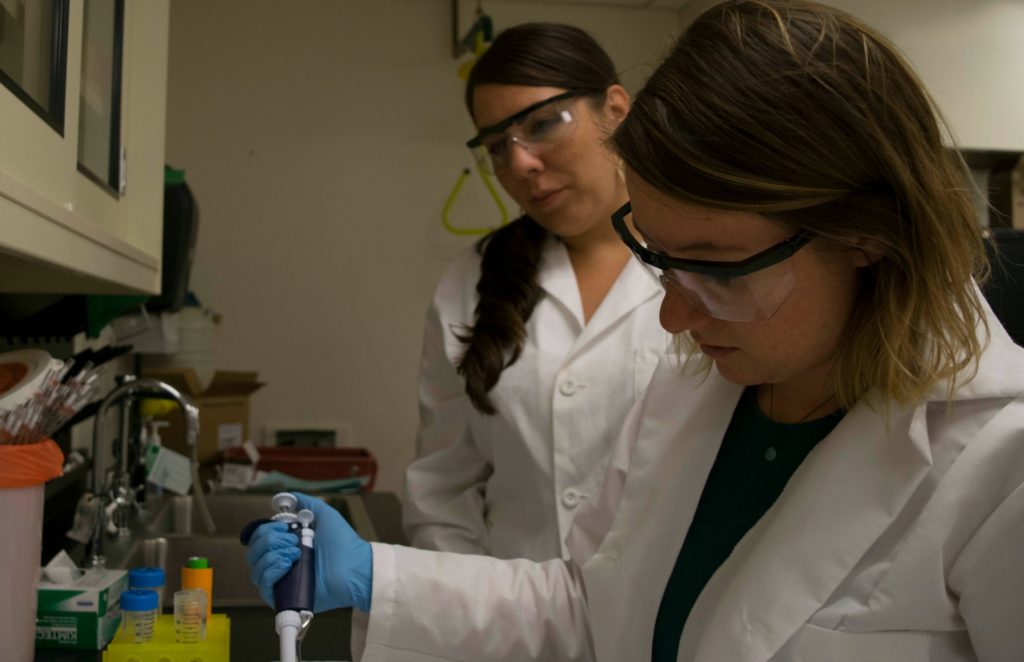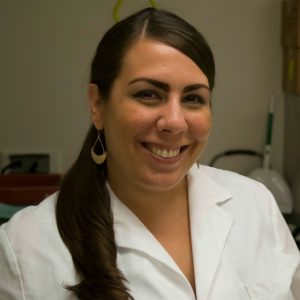
Story by Christian Knoll
A CSU faculty member is leading an interdisciplinary research team that will study the effects of blueberries on cardiovascular health in postmenopausal women with elevated blood pressure.
Positive effects of blueberries

The project is headed by Sarah A. Johnson, an assistant professor and director of the Functional Foods & Human Health Laboratory in the Department of Food Science and Human Nutrition. The basis of Johnson’s research stems from her time at Florida State University, where she earned her master’s and doctorate, and completed a postdoctoral fellowship in nutrition and food science in the Department of Nutrition, Food, and Exercise Sciences. There, as part of her dissertation, Johnson found that the consumption of 22 grams of freeze-dried blueberry powder per day for eight weeks (equivalent to approximately one cup of fresh blueberries) can have positive cardiovascular effects such as decreasing blood pressure, reducing arterial stiffness, and increasing blood levels of a molecule called nitric oxide, which causes vasodilation (widening of blood vessels) in postmenopausal women with elevated blood pressure.
With support from the U.S. Highbush Blueberry Council in Folsom, California, Johnson and her team — which includes CSU’s own Frank Dinenno, a professor in the Department of Health and Exercise Science, and the University of Colorado Boulder’s Douglas Seals, a professor in the Department of Integrative Physiology — will expand her research and study the effects of blueberries on vascular endothelial function in postmenopausal women with elevated blood pressure, and possible mechanisms through which they work. The endothelium is a single layer of cells lining the inside of blood vessels, and its normal function is needed for arteries to be able to expand and contract.
“Before menopause, many women are not at risk for cardiovascular disease,” Johnson said. “Once they are postmenopausal, their risk often increases to the point that they are matching and sometimes exceeding men in their cardiovascular risk.”
Natural form of therapy
According to Johnson, there are a number of cardiovascular abnormalities that often occur in postmenopausal women. These abnormalities pose a number of health-related risks and include issues like high blood pressure and vascular dysfunction. Through her research, Johnson believes an effective, economical and natural form of therapy can be found and used for prevention of cardiovascular diseases.
Blueberries contain numerous bioactive compounds, including vitamins, minerals, dietary fiber and polyphenols. One class of polyphenols that is responsible for the blue color in blueberries, anthocyanins, is what Johnson believes is one of the keys for positively influencing cardiovascular health. However, as a functional food researcher, she believes that the compounds found within blueberries work together to exert their health benefits.
“There is research that indicates that there are differences between men and women in the development of cardiovascular diseases and their responses to treatments,” Johnson said. “There are studies that show that postmenopausal women are not as responsive to therapies like aerobic exercise and certain nutritional interventions as men are in terms of cardiovascular health. Consuming blueberries is something that they can do regularly as part of their diet and in addition to physical activity that is natural and generally free of side effects.”
Looking beyond her study, Johnson hopes to examine the long-term effects of blueberry consumption and how it relates to the development of atherosclerosis, the build-up of plaque along the arterial wall. She is also interested in expanding her collaborations to research ways to improve the functionality of blueberries in improving cardiovascular health using agricultural and food systems approaches.
“Once you find an intervention that shows promise, I believe you should move forward with studying it further,” Johnson said.
The Department of Food Science and Human Nutrition is part of CSU’s College of Health and Human Sciences.